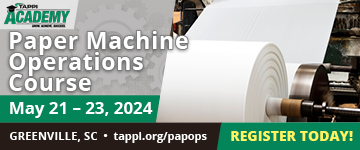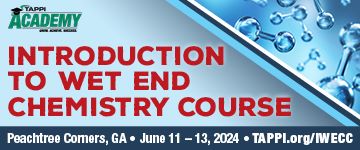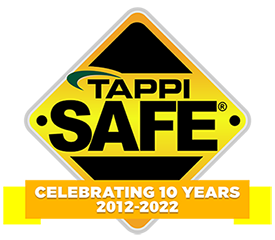 Search
Search
Use the search bar or filters below to find any TAPPI product or publication.
Filters
Content Type
Publications
Level of Knowledge
Collections
Journal articles

Magazine articles

TAPPI Journal Summaries, Paper360º September/October 2019
TAPPI Journal Summaries, Paper360º September/October 2019
Journal articles

Magazine articles

Celebrating 100 Issues of Paper360°, Paper360º September/October 2020
Celebrating 100 Issues of Paper360°, Paper360º September/October 2020
Journal articles

Magazine articles

The Shendye-Fleming OBA Index for paper and paperboard, TAPPI Journal March 2022
ABSTRACT: We are proposing a new one-dimensional scale to calculate the effects of optical brightening agents (OBA) on the bluish appearance of paper. This index is separate from brightness and whiteness indices.In the paper industry, one-dimensional scales are widely used for determining optical properties of paper and paperboard. Whiteness, tint, brightness, yellowness, and opacity are the most common optical properties of paper and paperboard. Most of the papers have a blue cast generated by addition of OBA or blue dyes. This blue cast is given because of the human perception that bluer is whiter, up to a certain limit. To quantify this effect, it is necessary to determine how much blue cast paper and paperboard have. As the printing industry follows the ISO 3664 Standard for viewing, which has a D50 light source, this also plays a very important role in showing a blue cast. Color perception is based on light source and light reflected from an object. The ultraviolet (UV) component in D50 interacts with OBA to provide a reflection in the blue region of the visible spectrum. Use of a UV blocking filter results in measurements without the effect of emission in the blue region. This difference is used in determining the OBA effect in the visible range of the paper. This equation is known as the Shendye-Fleming OBA Index.
Journal articles

Magazine articles

Evaluation of rice straw for purification of lovastatin, TAPPI Journal November 2021
ABSTRACT: Cholesterol synthesis in the human body can be catalyzed by the coenzyme HMG-CoA reductase, and lovastatin, a key enzyme inhibitor, can reduce hypercholesterolemia. Lovastatin can be obtained as a secondary metabolite of Aspergillus terreus ATCC 20542. In this study, rice straw of lignocellulose was used in aeration and agitation bath fermentation in a 1-L flask, and a maximal crude extraction rate of 473 mg/L lovastatin was obtained. The crude extract was treated with silica gel (230•400 mesh) column chromatography. Ethyl acetate/ethanol (95%) was used as the mobile phase, and isolation was performed through elution with various ethyl acetate/ethanol ratios. The highest production rate of 153 mg/L was achieved with ethyl acetate/ethanol in a ratio of 8:2. The lovastatin gained from the crude extract was added to 12 fractions treated with 0.001 N alkali, and acetone was then added. After 24 h of recrystallization at 4°C, the extract underwent high-performance liquid chromatography. The purity had increased from 25% to 84.6%, and the recovery rate was 65.2%.
Journal articles

Magazine articles

Leadership in Maintenance, Paper360º May/June 2018
Leadership in Maintenance, Paper360º May/June 2018
Journal articles

Magazine articles

Practical Strategies to Reduce Pulp and Paper Mill Energy Use, Paper360º July/August 2018
Practical Strategies to Reduce Pulp and Paper Mill Energy Use, Paper360º July/August 2018
Journal articles

Magazine articles

Specialty Producer Tries a New Quick Link to Efficiency, Paper360º September/October
Specialty Producer Tries a New Quick Link to Efficiency, Paper360º September/October
Journal articles

Magazine articles

The Problem with Seal Water Systems, Paper360º September/October
The Problem with Seal Water Systems, Paper360º September/October
Journal articles

Magazine articles

UPM: The Forest Forerunner, Paper360º September/October
UPM: The Forest Forerunner, Paper360º September/October
Journal articles

Magazine articles

TAPPI Journal Summaries, Paper360 May/June 2019
TAPPI Journal Summaries, Paper360 May/June 2019






